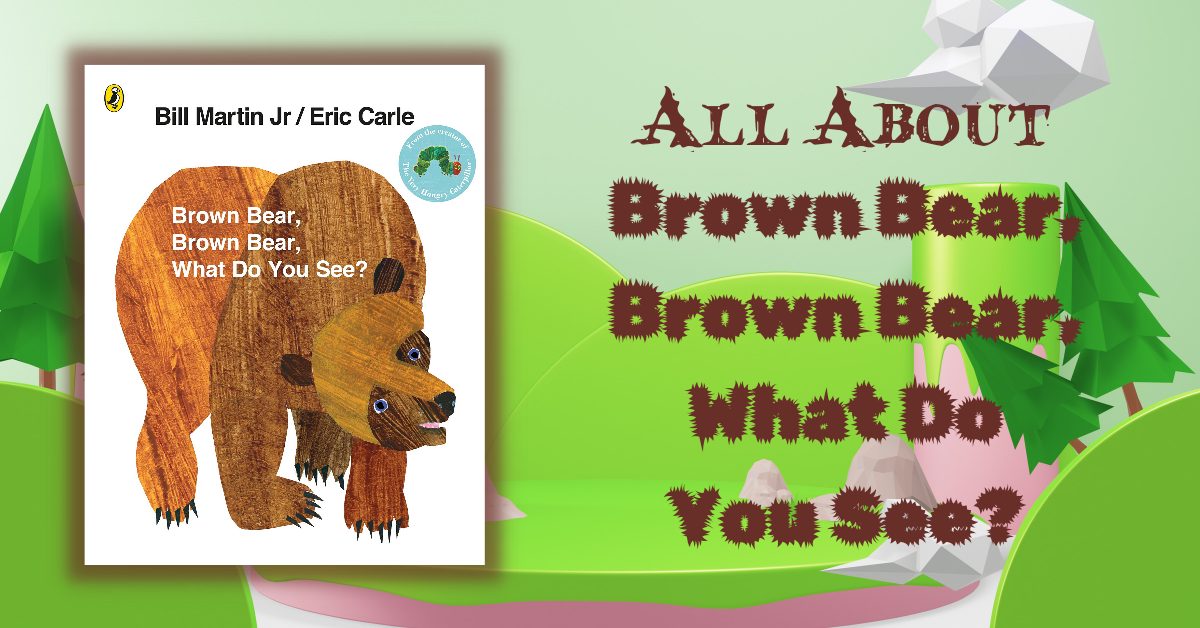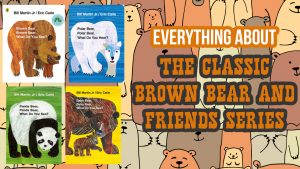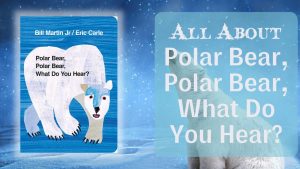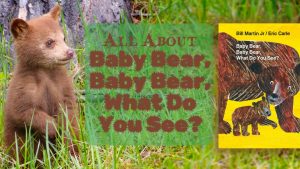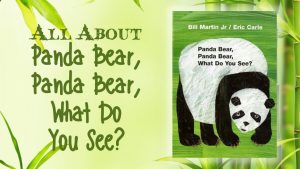Brown Bear, Brown Bear, What Do You See? written by Bill Martin Jr. and illustrated by Eric Carle is a classic picture book. It has been a favorite among young readers for generations, introducing them to the colorful world of animals and the joys of reading. Whether you’re a parent, grandparent, teacher, or just a lover of children’s literature, you’re sure to enjoy this title! So read on for everything you need to know about this much loved classic!
Table of Contents [CLICK HERE TO OPEN]
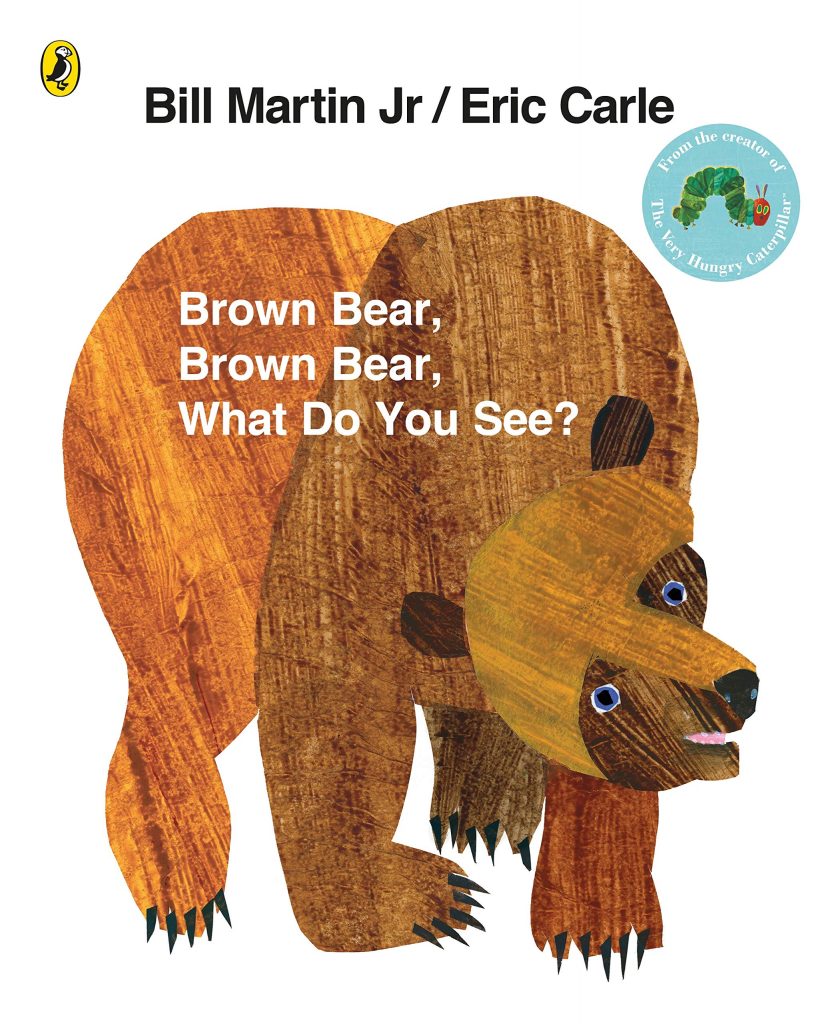
Book Description
A big happy frog, a plump purple cat, a handsome blue horse, and a soft yellow duck– all parade across the pages of this delightful picture book classic.
Children will immediately respond to Eric Carle’s flat, boldly colored collages. Combined with Bill Martin’s singsong text, they create unforgettable images of these endearing animals.
About The Authors
Bill Martin Jr
Bill Martin Jr. (1916-2004) was an American author and educator, best known for his children’s books including this title and “Chicka Chicka Boom Boom.” He was born in 1916 in Hiawatha, Kansas, and earned his bachelor’s and master’s degrees from Kansas State Teachers College (now Emporia State University).
After serving in World War II, Martin became an elementary school teacher, and it was during this time that he began writing children’s books. His first book, “The Little Squeegy Bug,” was published in 1952. But his career as a children’s author truly took off with the 1967 release of “Brown Bear, Brown Bear, What Do You See?”. This title has since become a classic of children’s literature and has sold millions of copies worldwide.
Martin continued to write and publish books throughout his career, and his work has been translated into numerous languages. He also served as a consultant in education and as a lecturer on reading and children’s literature. Martin’s writing philosophy is characterized by the use of simple, repetitive language and attention-grabbing illustrations to help young children learn to read. And that is what made him a master in children’s literature.
Martin died in 2004, but his legacy lives on through his many beloved books. As well as the countless children who have been introduced to the joys of reading through his work.
Eric Carle
Eric Carle is a world-renowned children’s book author and illustrator, best known for his classic picture book “The Very Hungry Caterpillar.” Born in Syracuse, New York in 1929, Carle moved with his family to Germany when he was six years old. He later returned to the United States to study design at the Parsons School of Design in New York City. But he found success as an illustrator before he graduated.
Carle began his career as a graphic designer and illustrator for the New York Times. But it was his first book “Brown Bear, Brown Bear, What Do You See?” written by Bill Martin Jr., published in 1967, which launched his career as a children’s book creator. The book’s success was followed by many more, including the highly acclaimed “The Very Hungry Caterpillar,” published in 1969. The book has become an international best seller and has been translated into more than 62 languages.
Carle has written and illustrated more than 70 books, many of which have become children’s classics and have sold millions of copies around the world. He is known for his use of vibrant colors and hand-painted tissue collage illustrations. This is a technique he developed early on in his career. His books often include themes of nature, the environment, and the journey of metamorphosis. He also actively promotes literacy and education, establishing the Eric Carle Museum of Picture Book Art in Massachusetts in 2002.
Carle continues to write and illustrate children’s books, and his work has been honored with numerous awards and accolades. This includes the Laura Ingalls Wilder Medal, which recognizes an author or illustrator whose books, published in the United States, have made, over a period of years, a substantial and lasting contribution to literature for children
Our Review
“Brown Bear, Brown Bear, What Do You See?” features a series of repeating question-and-answer phrases that introduce a variety of different animals, each of which is described with vibrant, colorful illustrations. The book’s simple text and bright, eye-catching illustrations make it an appealing and accessible read for young children.
The pattern of question-and-answer phrases encourages children to participate and engage with the story. This structure is a nice way for children to learn new vocabulary and animal names. The illustrations are colorful and detailed, capturing the unique characteristics of each animal and bringing them to life. Also, the book’s repetitive pattern is easy for children to understand and can help them to develop language and reading skills.
This is a classic children’s book that has stood the test of time. Its simple text and colorful illustrations make it an appealing and accessible read for young children. It is a fun and interactive way to introduce children to colors, animals, and language. We definitely recommend this book to anyone looking for an engaging and educational read for young children. A much loved classic that is not to be missed!
Brown Bear Read Aloud
The Rest Of The Series
This title is followed by three others in the same format:
Panda Bear, Panda Bear What Do You See?
Polar Bear, Polar Bear, What Do You Hear?
Baby Bear, Baby Bear, What Do You See?
Be sure to check them all out!
Frequently Asked Questions
What comes after Brown Bear, Brown Bear, What Do You See?
After Brown Bear, Brown Bear, What Do You See comes Panda Bear, Panda Bear, What Do You See? This is then followed by Polar Bear, Polar Bear, What Do You Hear? Finally the last book in the series is Baby Bear, Baby Bear, What Do You See?
What is the moral of Brown Bear, Brown Bear, What Do You See?
“Brown Bear, Brown Bear, What Do You See?” is a classic children’s picture book that uses simple repetitive text and colorful illustrations to introduce young children to the world of animals and the joys of reading. The book is not meant to have a specific moral lesson, instead the book’s main goal is to help children learn to read by introducing them to words, colors, and animals in a fun way.
The book progresses by asking “Brown Bear, Brown Bear, What Do You See?” with each animal responding by seeing another animal and the cycle is repeated. It can be argued that the book does build on the idea of observation and recognition which can be taken as a way for children to learn about different animals and their characteristics.
It could also be seen as a way to help children develop their memory skills as they learn the repetitive pattern of the text and the animals, creating a sense of predictability. The book helps children to learn that reading can be a delightful experience and thus encouraging reading.
What is the summary of Brown Bear, Brown Bear, What Do You See?
“Brown Bear, Brown Bear, What Do You See?” is a children’s picture book written by Bill Martin Jr. and illustrated by Eric Carle. The book is a simple and repetitive story that follows the pattern of an animal seeing another animal and asking “Brown Bear, Brown Bear, What Do You See?”
The story starts with a brown bear asking the question and seeing a red bird. The red bird then asks the question and sees a yellow duck and the pattern continues with different animals. So it goes onto a blue horse, green frog, purple cat, white dog, black sheep, goldfish, teacher, children and so on. The book ends with the teacher and children seeing a brown bear, and asking the question, “Brown Bear, Brown Bear, What Do You See?” The book’s main goal is to help children learn to read by introducing them to words, colors, and animals in a fun way. It also helps in developing memory skills and encouraging reading.
What do you think of this much loved children’s classic book? Let us know!

